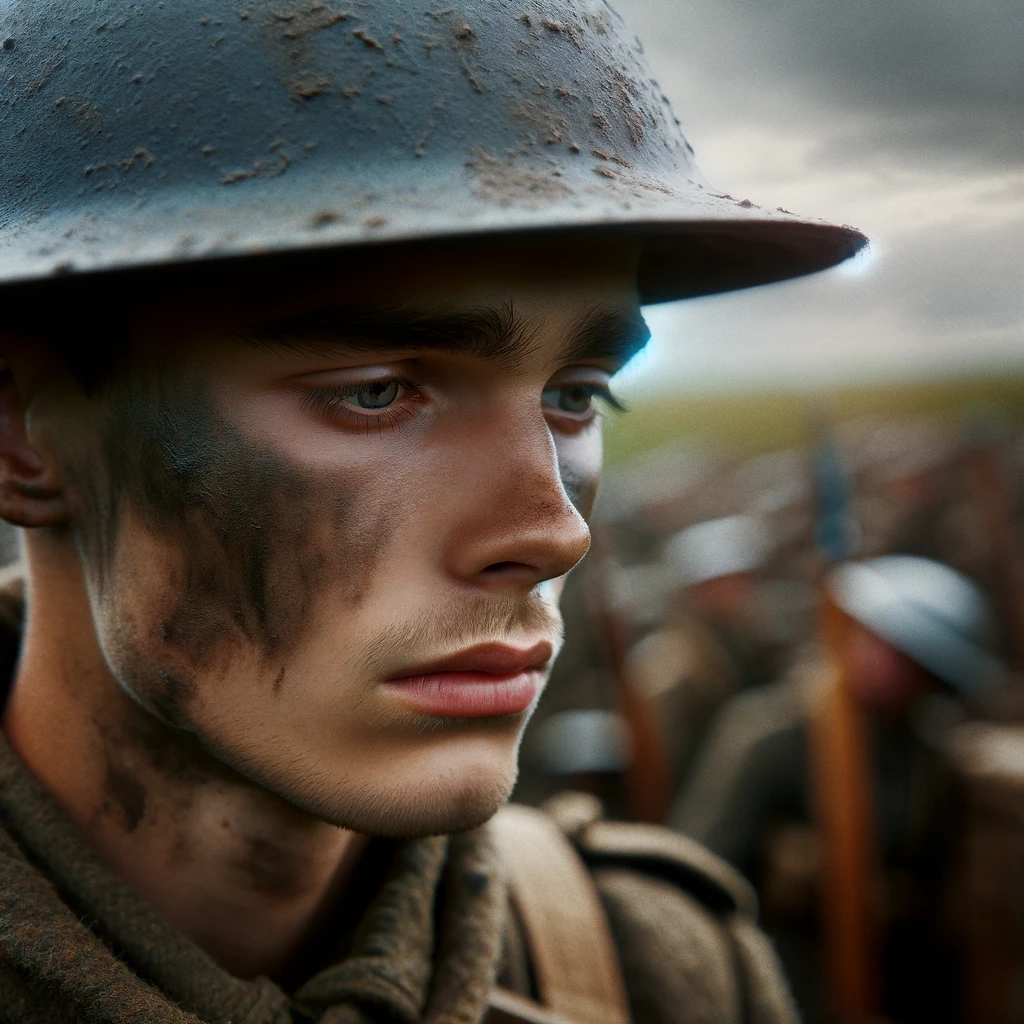“Over There with the Canadians at Vimy Ridge” by G. Harvey Ralphson is an evocative narrative that captures the raw intensity and profound humanity of World War I through the experiences of Canadian soldiers at the iconic Vimy Ridge battle. The novel weaves a tale that, while steeped in the harsh realities of war, is punctuated by a playful and ironic tone that both lightens and deepens the emotional impact of the story.
The protagonist of our story is a young Canadian volunteer, whose eager idealism is initially painted in bright, bold strokes. He dreams of glory and heroism, visions fueled by vibrant tales of valor. However, as the narrative unfolds, his experiences at Vimy Ridge reshape these dreams into a more complex and somber reality. The author playfully toys with this transformation, using irony to highlight the stark contrast between the soldier’s naive expectations and the brutal truths of trench warfare.
One of the standout features of Ralphson’s storytelling is his use of vivid, immersive descriptions. The muddy trenches, the thunderous artillery, and the sharp staccato of rifle fire are rendered with such detail that one can almost smell the cordite and feel the earth shake. This sensory depth enhances the irony when, amidst this chaos, soldiers are found cracking jokes or sharing absurd stories—human moments that starkly contrast with the dehumanizing brutality of war.
Ralphson also employs a playful tone through his characters’ interactions. Despite the dire circumstances, camaraderie flourishes among the soldiers. Their banter, full of dark humor and wry observations, serves as a coping mechanism and brings lightness to the narrative. This irony is not just a narrative device but a lens through which the absurdity and tragedy of war are magnified.
The theme of brotherhood is another poignant aspect of the novel. The bond between the soldiers transcends mere friendship, evolving into a deep, almost familial connection. Ralphson explores this bond with both a playful and an ironic touch, celebrating its strength while also acknowledging the heartbreak when these bonds are inevitably broken by war’s cruel hand.

Ralphson’s use of irony reaches its peak in his depiction of the battle itself. Vimy Ridge, historically significant for its strategic victory, is portrayed not just as a military triumph but as a poignant symbol of sacrifice and futility. The author juxtaposes the strategic importance of the victory with the personal losses of the soldiers, creating a powerful commentary on the true cost of war.
In conclusion, “Over There with the Canadians at Vimy Ridge” is a compelling blend of raw war narrative and rich emotional storytelling. Ralphson’s playful and ironic approach not only provides a unique reading experience but also deepens the reader’s understanding of the complex human dimensions of war. Through vivid descriptions, poignant character development, and skillful use of tone, the novel offers both a tribute to the bravery of the Canadian soldiers and a reflective critique of the senselessness of war.


